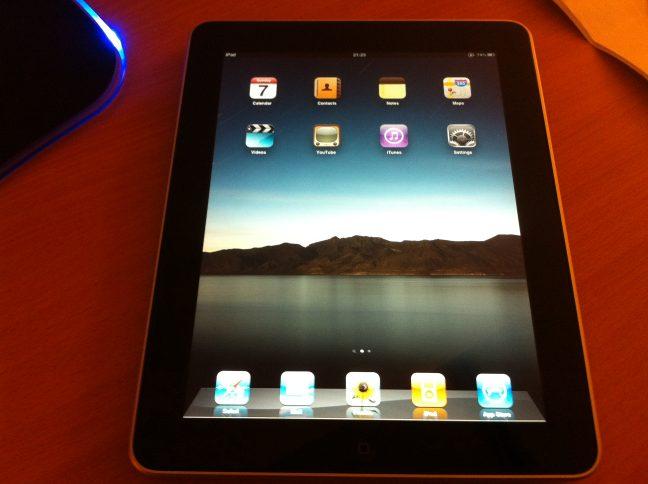To decrease costs and make studying more efficient, the Executive MBA program at The University of Wisconsin has gone paperless, and has instead adopted iPads for their students.
Executive MBA students squeeze in their graduate education by attending two full days of class in the School of Business every two weeks while maintaining their full-time jobs, Paul Oliphant, director of Academic Technology and Web in the School of Business, said.
“Between that, there’s a lot of individual and group work to be done,” Oliphant said.
Holding down the type of full-time jobs the students are holding can require them to travel for work, meaning all individual and group work might need to be done from another city or even another country.
That’s why the Executive MBA program officially went paperless this summer, said Leslie Petty, the assistant dean of the Evening and Executive MBA programs.
“We really started to look at ways we can become much more sustainable and also innovative in our programs,” Petty said.
Ditching the bulky binders of course material and case studies that the program has used since its inception, Petty said all 41 students enrolled in the program received iPads this semester.
iPads didn’t immediately come to mind when they decided to go paperless, Petty said. But after taking inventory of student input and looking at the portability, price and functionality of multiple laptops and tablets, Oliphant said the iPad Pro won out when the Apple Pen was introduced earlier this year.
With Apple’s tablet, Oliphant said students will be able to organize the materials and their own notes as well as annotate handouts and other material.
Oliphant, who graduated from the Executive MBA program in 2015, said a sizable portion of the work was dependent on the ability to coordinate with fellow classmates outside of class.
“Ninety-five percent of our team meetings were over the web, Google Hangouts,” Oliphant said.
At the same time, the Executive MBA program encompasses students of many ages. That generational variation, Oliphant said, made it difficult for all of them to access technology on the same playing field.
For example, Oliphant said, one of the students was interested in creating an app to help them complete their coursework, while another student in the same cohort relied on her daughter to serve as something of a personal assistant.
By introducing iPads to the classroom, Oliphant said, everyone has access to the same technology and can be brought to a similar level.
Between the cost of binders, copyright fees and photocopying, Petty said the approximate $900 to purchase an iPad Pro, including stylus and case, is actually cheaper than the traditional materials.
Paid for through MBA student program fees, each iPad will be used for two years, the duration of the program, before being passed on to new students.
Use of a common tool for all students also means it’s all of the professors in the Executive MBA program are using the same tool. Oliphant said he hopes the establishment of this one common learning manual system will help professors standardize and better serve their students.
“These iPads raised the bar so that all the faculty [and students] are now using the same electronic tools and approach,” Oliphant said. “[It will help students] be really productive everywhere they happen to be — whether it’s in airplane, hotel room, or at home, as well as in the classroom.”
The Evening MBA program will get iPads next fall.







